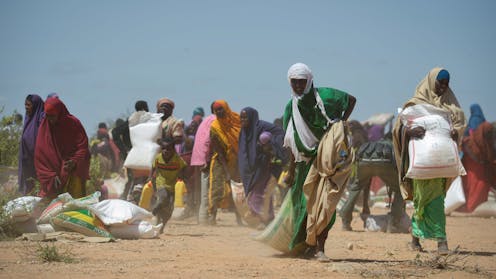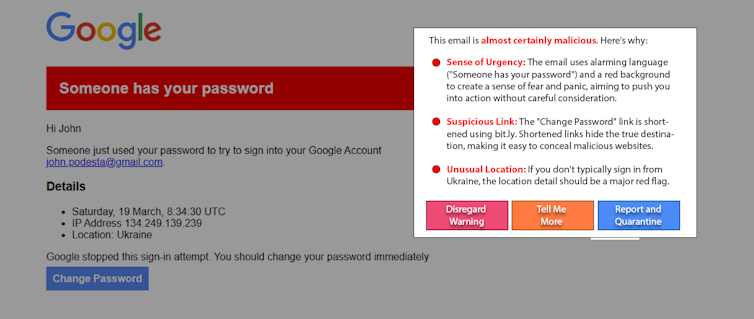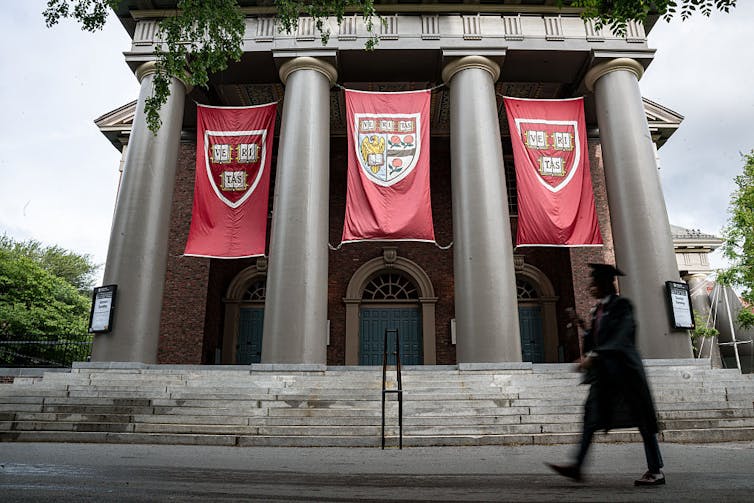Source: The Conversation – Africa (2) – By Leila Patel, Professor of Social Development Studies, University of Johannesburg
A 2024 Unicef report found that 23% of South African children experience severe food poverty, eating less than two of the recommended five food groups per day. Unemployment, food insecurity, limited access to basic services and a lack of knowledge about nutrition all contribute to this. The lead researcher of this multidisciplinary study, Leila Patel, and collaborating researchers Matshidiso Sello and Sadiyya Haffejee suggest ways to tackle this dire situation.
What’s in place to protect children from poverty?
Since a call for prioritising the needs of children was adopted by the Mandela government in 1994, much progress has been made in expanding access to education, to immunisations, other primary healthcare services and social grants. Just over 13 million children now receive a child support grant. This has reduced child hunger rates from the high levels seen during the apartheid and immediate post-apartheid eras.
But the grant doesn’t get to all the children who qualify for it. Around 17.5% of eligible children still don’t receive it. Reasons include a lack of proper documentation, lack of awareness of eligibility criteria and insufficient outreach by government agencies to reach vulnerable populations.
Also, the grant isn’t close enough to the food poverty line, which is R796 (about US$43) per month per person based on the daily energy intake that a person needs. From 1 April 2025, the child support grant will increase to R560 (about US$30) per month per child.
Secondly, although school feeding schemes are in place, many children fall outside the net. Close to 10 million children in low income communities in South Africa have access to a school lunch via the National School Nutrition Programme. This programme is an excellent intervention which improves the health of children. However, in 2024, about a quarter of the children who are eligible did not receive school meals. Some of the reasons are procurement issues, funding delays, problems with provisioning, and the impact of the COVID-19 pandemic, when school feeding ceased. Uptake has recovered to some extent but there is a need to improve the quality and effectiveness of the school feeding programme to improve nutritional outcomes.
You designed a system to help alleviate child poverty: what did it involve?
The South African Research Chairs Initiative and the Centre for Social Development in Africa at the University of Johannesburg implemented a study to strengthen social and care systems across health, education and social development. The project, which was started in 2020, involved tracking early grade learners and their caregivers in Johannesburg over a three-year period, looking at their health, material circumstances, food security, educational performance and mental health. Our research revealed a concerning picture of child hunger in Johannesburg, Africa’s wealthiest city.
The number of children in our study who went to bed hungry in the past week decreased from 13.7% in 2020 to 4.9% in 2022. Zero hunger was achieved in 2021 but it increased again in 2022 due to broader economic pressures like rising food prices and unemployment. While stunting rates showed a slight downward trend over the three years (from 13.5% in 2020 to 11.1% in 2022), we observed worrying increases in wasting, a severe form of malnutrition (from 5.6% in 2020 to 20.3% in 2022), and underweight (from 5.6% in 2020 to 11.4% in 2022).
Increases in wasting may be due to the COVID-19 pandemic and slow economic recovery. Nevertheless, the fluctuating figures underscore the complex interplay of factors contributing to severe child hunger.
The teams who worked on the project – called the Community of Practice intervention – set about creating a tighter, more supportive net around children experiencing severe and moderate risk. This integrated approach brought together government agencies, NGOs, schools, social workers, families and community leaders, to build sustainable solutions for child wellbeing.
The focus was on strengthening existing systems and fostering collaboration to ensure that children’s needs were identified and addressed effectively. On average, 157 children were reached each year over a three year period.
Read more:
COVID-19 has hurt some more than others: South Africa needs policies that reflect this
What did you find?
Several promising practices emerged from the collaborations, demonstrating the potential for positive change. These included:
-
Strengthening school nutrition programmes by improving the quality and consistency of meals received and providing nutrition education through radio and WhatsApp messaging. More children had access to school meals.
-
Tailored interventions: The team conducted screenings to assess the needs of children and their families. Children requiring specific interventions were referred to appropriate services such as child protection services and grants. Caregivers facing mental health challenges were connected to psychosocial support services, and families experiencing hunger were provided with food parcels by NGOs. Providing food top-ups for children resulted in zero hunger in the second year of the pandemic.
The number of children experiencing learning and social and emotional difficulties decreased between 2020 and 2022. Access to food and nutrition improved, higher vaccination rates were achieved and caregivers were more responsive to their health needs.
What does this tell you about what needs to change?
A significant barrier in addressing severe child poverty is the fragmentation of services across the Departments of Health, Basic Education and Social Development. Since the departments run standalone programmes, the synergies between the different social systems are not optimised. Children and their families who need additional support are often referred to the appropriate services, but there is poor follow-up.
The Integrated School Health Policy of 2012 makes provision for better coordination between these departments. But implementation has been uneven and poor in some instances. Improving and strengthening these inter-connected social systems of service provision across government departments is critical to improving child food poverty outcomes.
While managing food inflation, economic growth, job creation, and reduced inequality are important longer-term goals, immediate interventions are essential to address severe child food poverty. Failure to do so will compromise school progression and delay their overall health and social wellbeing. Simply improving economic indicators will not automatically translate to food on the table for every child; targeted interventions are vital.
Ending severe child hunger in South Africa demands a comprehensive and coordinated response, involving government, NGOs, community organisations, schools, and families themselves.
![]()
Leila Patel receives funding from the National Research Foundation for the Communities of Practice (CoP) study for social systems strengthening for better child wellbeing outcomes.
Matshidiso Valeria Sello receives funding from the Centre of Excellence in Human Development for a project on Household Economic Shocks.
Sadiyya Haffejee receives funding from the National Research Foundation.
– ref. 23% of South Africa’s children suffer from severe hunger: we tested some solutions – experts – https://theconversation.com/23-of-south-africas-children-suffer-from-severe-hunger-we-tested-some-solutions-experts-252566





















